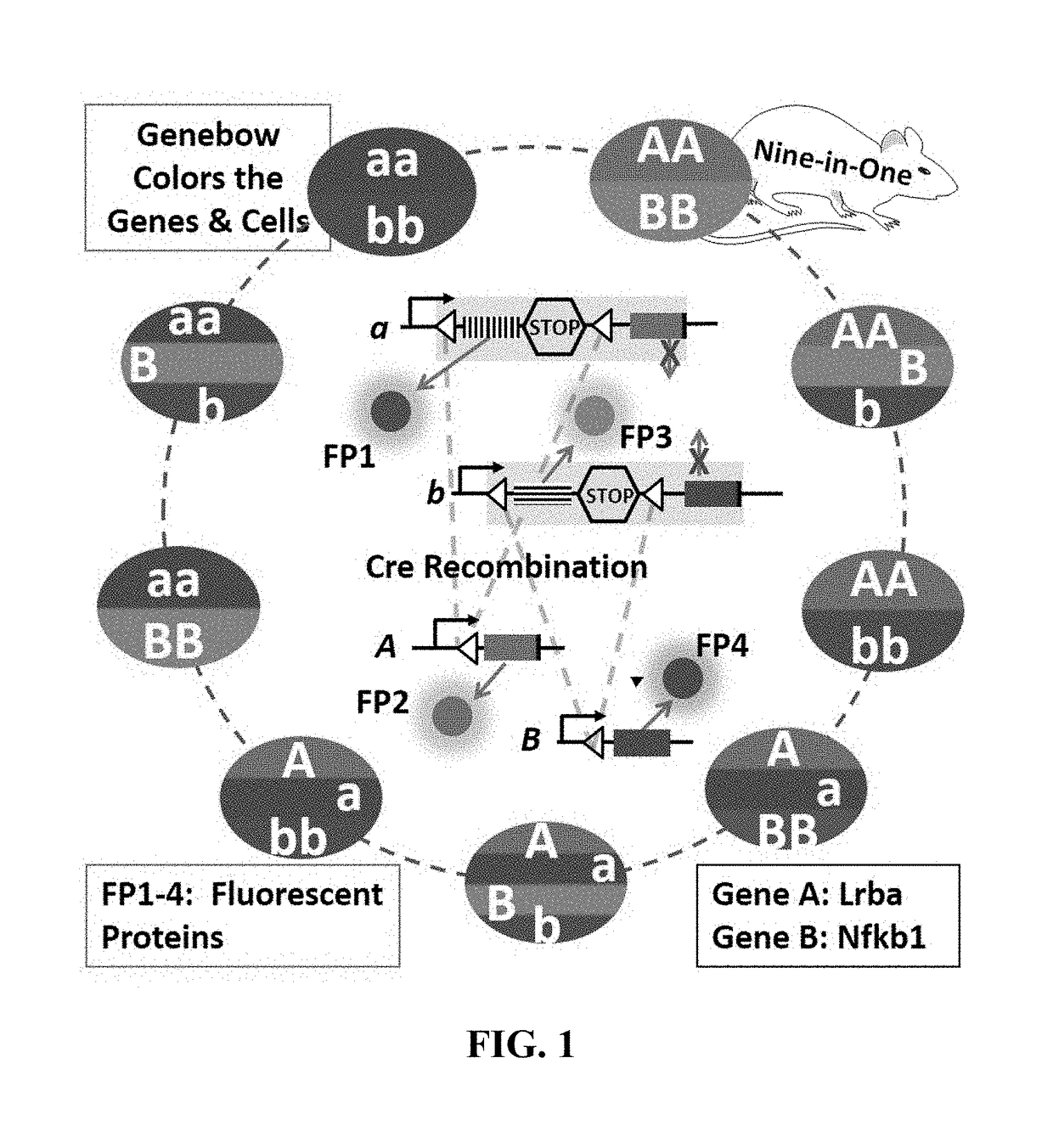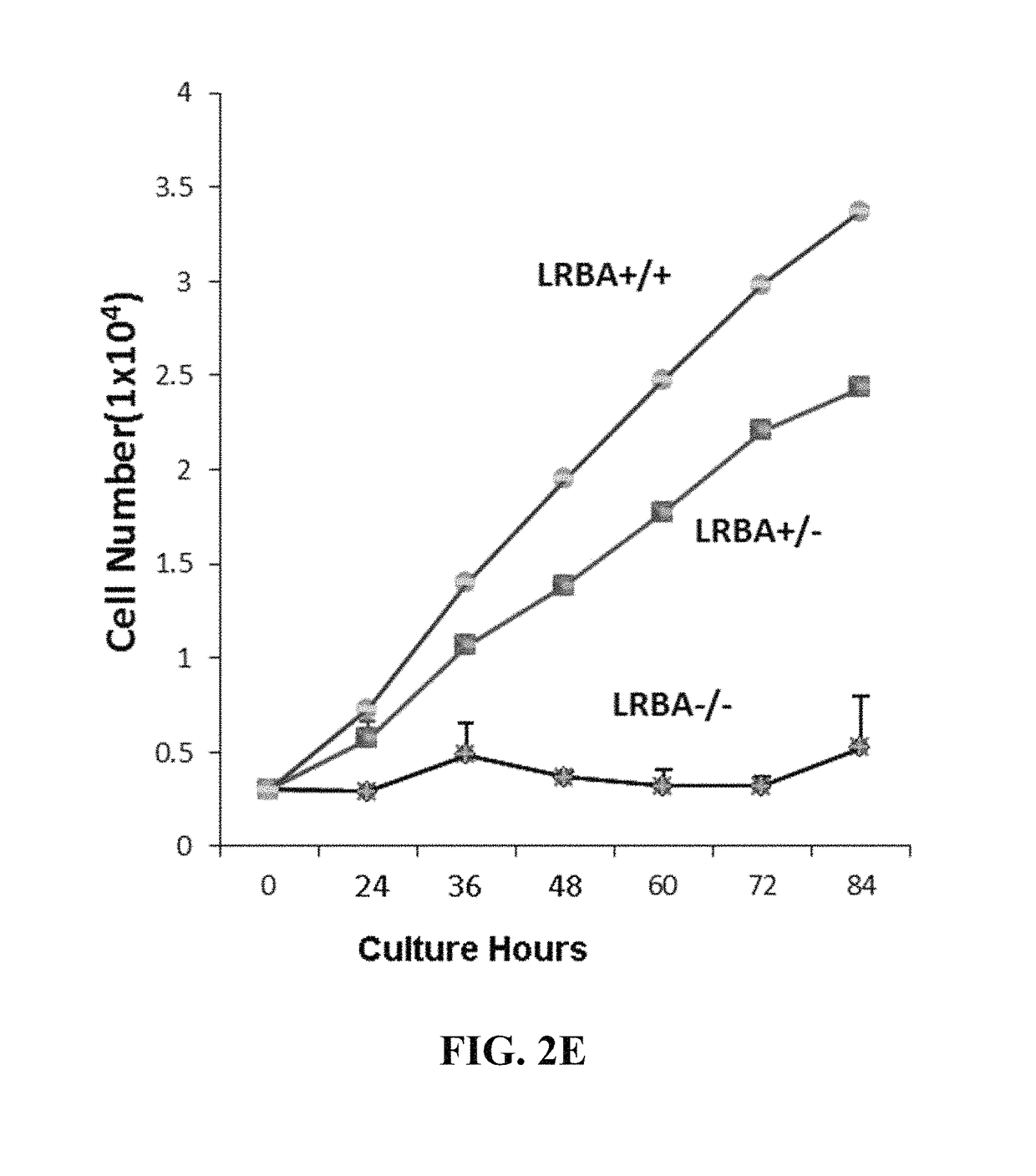Animal model and method for studying gene-gene interactions
a gene and interaction technology, applied in the field of animal models and methods can solve the problems of variable posing a great challenge in studying, current animal models are and the current animal model is not suitable for studying gene-gene interactions. achieve the effect of wide genetic background and high sensitivity
- Summary
- Abstract
- Description
- Claims
- Application Information
AI Technical Summary
Benefits of technology
Problems solved by technology
Method used
Image
Examples
example 1
Targeting Vector Construction and Functionality
[0134]1. Gene Labeling Strategy.
[0135]As shown in FIG. 1, the wild type (WT) allele (A) will be labeled with FP1, the KO allele (a) with FP2. The cells with alleles A and a will have two colors, FP1 and FP2. Thus the three genotypes of one gene can be specifically labeled with two FPs. To this end, FP2 and gene A are linked in frame with the porcine teschovirus-1 2A (P2A) sequence encoding a self-cleavable peptide, and they will be co-expressed. FP1 is placed downstream of the promoter of the gene A and will be expressed if the promoter is active. FP1 is followed by a STOP that serves as a stop signal for the transcription and translation of the downstream genes, i.e., FP2 and A genes. However, once the FP1 and the STOP are removed by the Cre / loxP system, FP2 and A will be expressed. Thus, FP1 (WT) and FP2 (KO) are exclusively expressed. Similarly, FP3 & 4 will be used to label gene B (FIG. 1). Together, the nine genotypes of the two ge...
example 2
Animal Model Generation and Model Functionality
[0147]1. Generation of Mouse Model Through CRISPR Technology.
[0148]The mouse model will be generated as described previously [53,83]. Briefly, the T7 promoter will be added to the Cas9 coding sequence, the sgRNAs of Nfkb1 and Rosa26 by PCR using the primer pairs (Lrba sgRNA has been synthesized) [53]. The RNAs will be synthesized by T7 RNA polymerase in vitro and purified. Then, the Cas9 mRNA (100 ng / ml), and sgRNA (50 ng / ml) and 200 ng / ml target DNA template for each target will be injected into the cytoplasm of fertilized B57BL / 6 eggs. Cytoplasm injection yields the highest number of positive pups with 89% homozygous KO efficiency [84]. The genomic DNA from targeted and control mice, age 8 to 12 days, will be extracted from clipped toes and used for PCR screening: The correct 5′ and 3′ end targeting will be confirmed by the PCR protocol [9] using the primers from the vector and the genomic DNA sequence outside of the left or right arm...
PUM
| Property | Measurement | Unit |
|---|---|---|
| concentration | aaaaa | aaaaa |
| fluorescent | aaaaa | aaaaa |
| color | aaaaa | aaaaa |
Abstract
Description
Claims
Application Information
 Login to View More
Login to View More - Generate Ideas
- Intellectual Property
- Life Sciences
- Materials
- Tech Scout
- Unparalleled Data Quality
- Higher Quality Content
- 60% Fewer Hallucinations
Browse by: Latest US Patents, China's latest patents, Technical Efficacy Thesaurus, Application Domain, Technology Topic, Popular Technical Reports.
© 2025 PatSnap. All rights reserved.Legal|Privacy policy|Modern Slavery Act Transparency Statement|Sitemap|About US| Contact US: help@patsnap.com



